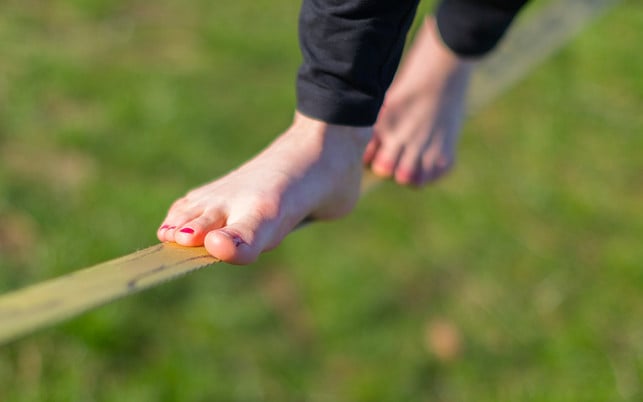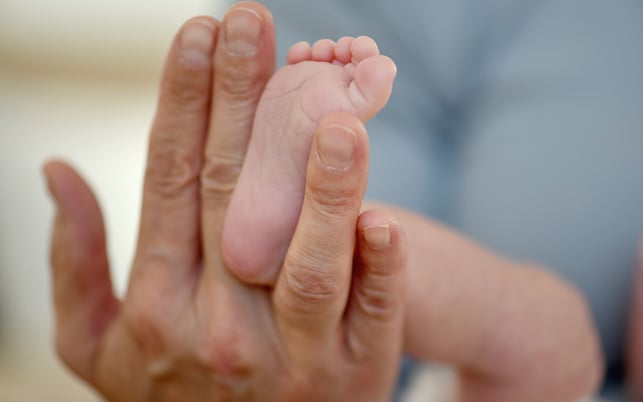
Mindfulness is more than just a buzzword – it helps to slow down our everyday lives and reduce stress. We show what’s behind the concept, how it can improve our quality of life and five simple mindfulness trainings for every day.
![]()
In everyday life we often rush from one situation to the next, thinking about what needs to be done at work at breakfast and planning what still needs to be done in the evening at work. We rarely give our full attention to the here and now. This causes stress, which has a negative impact on our health – and in extreme cases can lead to burnout, depression, anxiety or panic attacks. Mindfulness training can be a way to reduce this stress and live a more balanced, relaxed and healthy life.
What is Mindfulness?
Mindfulness is a form of meditation and originally comes from Buddhism. Being mindful means experiencing moments consciously and listening to your inner emotions – without judging. This is how you protect your psyche and slow down your life.
Mindfulness training: Mindfulness Based Stress Reduction (MBSR)
In the Western world, the molecular biologist Jon Kabat-Zinn is considered a pioneer of mindfulness practice: with his Mindfulness Based Stress Reduction (MBSR) method, developed in the 1970s, he made mindfulness meditation socially acceptable in our country.
MBSR is an eight-week mindfulness training. You learn to pay attention to physical sensations and just look at emotions. The crux of mindfulness is to notice without judging. This creates a distance between stimulus and reaction.
You can imagine it like this: Anyone who is afraid of an exam but only observes this feeling and does not evaluate it will not trigger any reaction and therefore no stress. In this way, mindfulness training helps to avoid stress in certain situations. MBSR training has been scientifically well researched and evaluated and can help people with a wide range of problems (more on this below).
Learn mindfulness
Apart from the numerous courses and online applications in which you can learn mindfulness and the many offers for mindfulness meditation, you can also easily complete various mindfulness exercises at home. A mindfulness planner such as the specially designed appointment calendar “A Good Plan” can also support you.
Most of these mindfulness exercises can be easily integrated into everyday life. In this way, without much effort, you can find peace and relax every day, perceive the here and now and live more consciously. We briefly introduce a few of them here.

1. Mindfulness exercise: pause
Between the different parts of our busy day, it’s a good idea to pause to recharge your batteries and relax.
Take at least a minute to pause several times a day. To do this, sit or stand comfortably and observe how your breath flows. Focus your attention on your body: You can focus on the areas you are currently feeling or simply notice your body as a whole. Then observe your feelings, ask yourself how you feel and see what happens. Remember not to judge, just observe. This may be difficult at first, but it will get easier over time.

2. Mindfulness meditation: walking consciously
You can use the time while you walk to focus and calm your thoughts. Walking is such an automatic movement that we hardly notice it consciously. This is exactly what walking meditation is about.
Concentrate on walking on the way to the grocery store, to the subway, climbing stairs, or taking a walk. Notice when your feet touch the floor, which muscles tense and relax. Watch your pace: Are you slowing down or going faster?

In this way, you consciously maneuver yourself into the here and now and give your worries a break – it has a relaxing effect.
3. Mindfulness training: breathe consciously
You can plan a little more time for the breathing exercise; it takes about ten to 20 minutes.
To do this, sit upright and relaxed with your eyes closed and concentrate on your breathing. Observe how you breathe in and out without changing or controlling your breathing. At first, just let the breath come and go. Then notice where it can be felt most clearly, how it feels on your nostrils. Then notice how your chest rises and falls, expands and contracts.

If you notice your thoughts wandering, let them go and return to observing your breath. Even after you have finished this exercise, allow the feeling of mindfulness to continue a little and take it with you into your day.
4. Mindfulness exercise: eat mindfully
Breakfast or lunch are also suitable for training mindfulness. Before eating, feel within yourself: Are you hungry or have an appetite? What mood are you in when you sit down at the table? Look at your food, what it looks like and what it is composed of. Then concentrate on the process itself, smell your food, carefully observe how you bring your food to your mouth, how it feels, how it tastes. Chew consciously and slowly. Be mindful for at least the first five bites of your meal. When you’re done eating, notice how your body feels now: Are you full? Do you feel satisfied?

This part of mindfulness training not only helps you eat more consciously. It also creates awareness about the foods we eat and the amount we eat. In our hectic everyday lives, we often devour our meals casually – without realizing what we are actually eating and where it comes from.
5. Mindfulness meditation: be grateful
This mindfulness exercise is particularly suitable for the evening, just before going to bed.
Go through your day: Think about what moved you and what experiences, people and things you feel grateful for today. Then focus your awareness on the things you are grateful for for at least 20 seconds each. This relaxes you and increases your awareness of the beautiful things you encounter in everyday life.

Numerous other tips and exercises for long-term mindfulness training can be found in books or on the Internet (worth reading and seeing: works by Jon Kabat-Zinn), in apps and podcasts.
Mindfulness: not scientifically recognized for a long time
Mindfulness training is part of new behavioral therapy procedures and is used by doctors and therapists in the USA and Germany. The method is said to help with back pain and migraines and has also been used successfully for eating disorders, psychological problems, depression and anxiety disorders, as a study by Boston University shows. In some clinics and hospitals, cancer patients are offered mindfulness meditation, among other things, to accompany cancer therapy.
For a long time, mindfulness meditation was placed in the esoteric corner. Numerous scientific investigations and studies have now confirmed their positive impact on health and well-being. A study from the University of Chicago also showed that MBSR can strengthen the immune system of sick people. Health insurance companies have now also shown interest in mindfulness training and are subsidizing mindfulness courses as part of prevention.
(Everyday) mindfulness and minimalism
Living more consciously and concentrating on the essentials are the focus of mindfulness and minimalism. The two concepts are mutually dependent. By practicing mindfulness in everyday life, you can avoid unnecessary impulse purchases because you consciously ask yourself in the moment: Do I even need this? Why do I want that?

In addition, minimalism, as a countermovement to constant excess, aims to free yourself from baggage. What happens here materially also affects the psyche. Because if you have little, you have little to worry about and little to worry about. That’s exactly what mindfulness exercises are all about: getting rid of ballast in the form of stressful thoughts. The less you ruminate about certain things, the more you can concentrate on the here and now, i.e. on the essentials.
This is how mindfulness is also sustainable: those who treat themselves and their environment more carefully will consume more consciously – and perhaps less. Living mindfully also means appreciating things and moments more and not constantly having to hunt for the new and better.
Read more on Techzle\.com:
- Digital Detox: 8 tips for consciously going offline
- Learning self-love: tips and exercises for the beloved self
- Gentle tourism: 15 Utopia tips for sustainable holidays
English version available: Mindfulness Based Stress Reduction: Living in the Present
** marked with ** or orange underlined Links to sources of supply are partly partner links: If you buy here, you are actively supporting Techzle\.com, because we then receive a small part of the sales proceeds. More info.